Just Accept It: Autocross Isn't Racing

Back in 2006, when I started autocrossing my Mazda RX-8 on stock shocks and Dunlop all-seasons, I took great pride in telling all of my friends that I was “going racing” each weekend. They would look at me in awe, and say, “You race cars?”
“I sure do,” I would reply, and I then I would show them pictures of my car, resplendent with number and class magnets. I usually neglected to mention that I never got out of second gear during these “races,” or that I typically drove faster on the way to the event than I actually did at the event. Nor did I mention that these “races” tended to occur in parking lots, and that most of my competitors were dorky, middle-aged men with social anxiety disorder who wore funny hats and jorts.
No, I let them have their image in their mind of me as a modern-day James Hunt, a fast-living, hard-drinking rebel who carelessly risked his life every weekend in the name of glory and passion. What’s worse, however, is that I started to believe some of my own fiction. I really thought I was racing.
Frankly, I was never all that great at autocross—I trophied at several national tour events and pro solos, but I was never a contender to win a national title. Nevertheless, I enjoyed it immensely…or at least, I thought I did. No, actually, that’s not true at all. I hated it.
Here’s why: National-level Autocross can best be summed up this way—you spend incredible sums of money and drive thousands of miles to spend six minutes driving your car at relatively low speeds around a parking lot. The rest of your day is spent standing out in the middle of the parking lot and picking up cones that other drivers knock over. If you win, you probably had a good day. If you didn’t, you’ve got to drive those same thousands of miles home replaying your runs over and over in your head, wondering where you lost that two tenths of a second. However, you’ve got a pretty good shot at winning because there are 236 different classes.
Of course, this is a simplified and not entirely honest description. The speeds, while low, do seem very fast when you’re inside the car. The driving does require very precise inputs and footwork, and I have great respect for those who do it well.
The SCCA National Solo circuit is full of really good people. They compete in earnest, and they are mostly supportive of their competitors. They hardly ever cheat, and even when they give lifetime bans to competitors for cheating, they don’t really mean it. One gets the feeling that they are largely the kind of people who were slightly socially awkward in high school, but they have now found a group of a couple of thousand kindred souls who find solace and joy in tinkering around with cars and shaving thousandths of seconds off their course times.
I don’t mean to rob any of them of their joy in what they do, but every time I see a Facebook status update from an autocrosser saying, “I’m going racing in the morning!” I have to seriously restrain myself from saying, “No, you aren’t!”
Autocrossers love to talk about how much skill and car control is involved in their hobby, and how they see more turns than an F1 driver does, and how the course is different every time. I can’t dispute any of those points.
However, it isn’t racing.
Wheel-to-wheel racing requires every skill that autocross does, and sometimes exponentially so. In addition to those skills, a racer must learn how to drive in traffic, how to execute a pass, how to drive the course when his preferred line isn’t available, how to avoid a spinning car in the middle of the track, and how to drive at speeds that are more than double the fastest speed any autocrosser will ever experience. But that’s the least of his worries.
He must conquer fear.
Autocrossers don’t have walls to deal with. They don’t have multiple car crashes. They don’t have to worry about totaling a perfectly good car. They don’t have to worry about injury or death. They simply put on their open face helmets and drive. And that’s why it’s not racing.
Every time I frantically strap myself into a car during a driver change of an enduro race, I wonder: Is this the last time I will do this? Even if I drive perfectly, will another driver take my life in his hands today? Even though we’ve checked the brakes and tires compulsively, what if one of them fails and sends me hurtling toward a steel barrier? What if, God forbid, I endanger another man’s life with my mistake?
I keep waiting for that fear to subside. It never does. And I don’t think it ever will.
I could see myself autocrossing again for fun someday. The SCCA has re-classed the Boss 302 into the class where it should have been all along, F Street. But, if somebody asks me what I’m doing that weekend, I will say, “I’m going autocrossing.”
This article originally appeared at www.barkm.com

More by Mark "Bark M." Baruth
Latest Car Reviews
Read moreLatest Product Reviews
Read moreRecent Comments
- Cprescott No big loss. It was always third rate when there was competition. At best its only good point was its price point.
- ToolGuy Journalists saving the world again. LOL.
- Stars9texashockey The Lyriq is selling better because it's discounted now. l think Lincoln does a much better job of styling their SUV's than Cadillac (except for Navigator vs. Escalade,) but they don't sell.However, Cadillac continues to offer sedans where Lincoln doesn't.
- SCE to AUX At this point, I don't know who the target customer is for Cadillac. I have zero interest.
- Cprescott Cadihack styling is stale - the interiors have not been luxurious, and the V-Series should be the base models in order to make waves. Until this company ditches the putrid and hideous pre-dented look of Arts and Scientology (!), the company is going nowhere.

















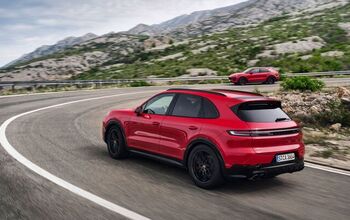
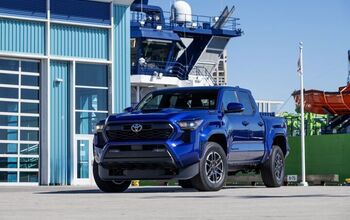
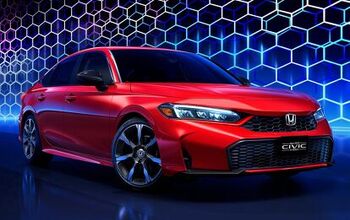


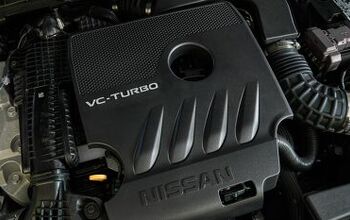

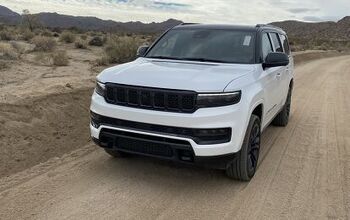
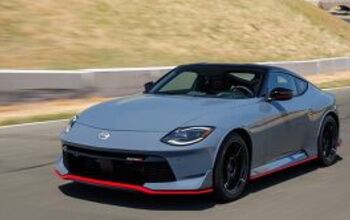
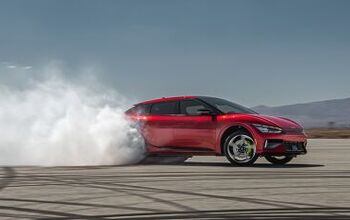



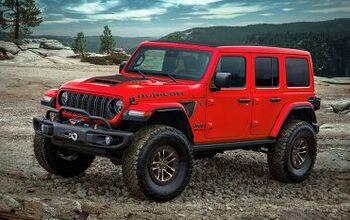
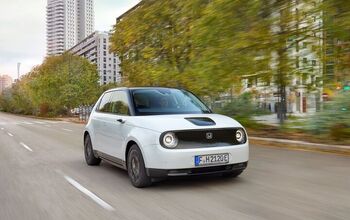

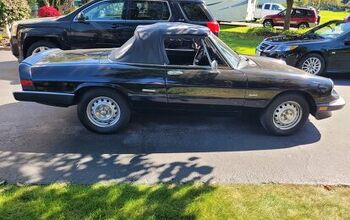
Comments
Join the conversation
I just fail to see purpose of this article all together. The author is making it a point to tell his audience that autocross is not racing. The fact is its not racing in his definition of the word, not the actual definition of racing. Its obvious from the tone of his writing that auto crossing is not for him, and he prefers road racing in what ever form he competes. The post here is misguided at best, from stereotyping its competitors to over simplifying the events. I urge anyone thinking about auto crossing to take his opinions for what they are, opinions.
I've run autocross at the regional and national SCCA level, plus other smaller clubs that offer more seat time than most SCCA events. This article is on-point although the inflammatory tone definitely gets some people's goats. Autocross is certainly its own funny little world with interesting an unusual characters. The lack of or minimal risk does allow you to go balls-out *usually* with minimal consequences. Strange course designs, unusual lots, and immovable objects can still conspire to make autocross riskier than you'd expect. I saw a course worker get hit by a Super Stock twin-turbo FD RX7 - worker had his back turned to the course, major no-no. He was okay but had to visit the hospital. This was years ago at an event at Mather AFB near Sacramento. One way to get more seat time through autocross is to find smaller clubs that would usually give 7-10 runs or more. You'll have more than enough time to get familiar with the course and by attending regularly can become an extended part of the club (Lotus, BMW, some Porsche groups, etc.). I've really enjoyed BMWCCA, Lotus Club and Loma Prieta Porsche in the SF Bay Area. Entries are often limited to 70-100 vs. 250+ at SCCA events so lots of runs come easier and sometimes there's time for additional afternoon fun runs. However, experiencing a National level SCCA autocross is certainly a great way to test your driving skills and potentially car setup, although some rules SCCA has are not friendly to track setup. This year, I've gotten heavily into track days / HPDE with a goal to compete in the NASA TT series. There is no substitute for being on track and driving at the limit. I highly respect wheel-to-wheel racers and envision doing that at some point, but I like my daily-driver too much to turn it into a pure track car just yet. For me, the challenge doing HPDE / Time Trials is to push the limits at track speeds and still drive the car home. A healthy fear and respect for mechanical limitations is there; from embracing and exploring going over the edge I experience a calm that never arose in any other context. There is a meditation space I can get into with HPDE that I look forward to. I may not be racing, but I certainly appreciate I'm at higher risk - and that higher risk brings a thrill, but more a calm acceptance than the whooping and hollering I used to do when turning a great autocross run. Driving the track at speed, using more and more of the berms lap after lap, setting up for the perfect pass to not ruin my lap time, watching corner workers for important flag updates - there's a lot going on even at an HPDE that will make you a better real-world driver. It's also made me a lot calmer on the street than I ever felt at autocross. I tended to still drive the street like I was autocrossing, but much less so since doing a track day about once a month. I could also just be getting more mature. While autocross was my official speed thrill, I believed I was indeed racing, but the only competition is really you understanding and working with your car. I don't consider as racing any more - it's a timed competition event. To give that hobby the credit it deserves, I highly recommend any aggressive driver who wants to jump on track to do at least a half dozen autocrosses first. Trust me, you WILL be a better driver when pushing you car to the edge, especially if you truly practice "looking ahead" and "slow in, fast out." Autocross is also a good place to practice trail-braking with less risk than at the track. Having just attended an HPDE2 and working up to HPDE4/TT, I highly recommend NASA's HPDE / Driver Education program. They ensure each HPDE driver is able to navigate the course safely and with awareness. That the SCCA lacks a real HPDE program is very unfortunate, but NASA fills that need - and also for road racing as well.